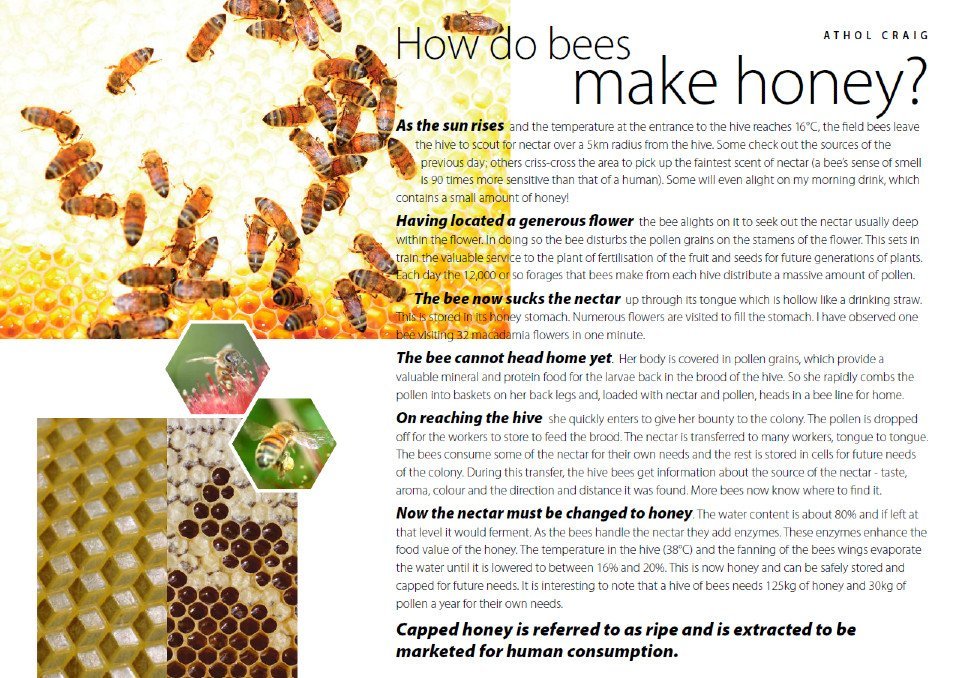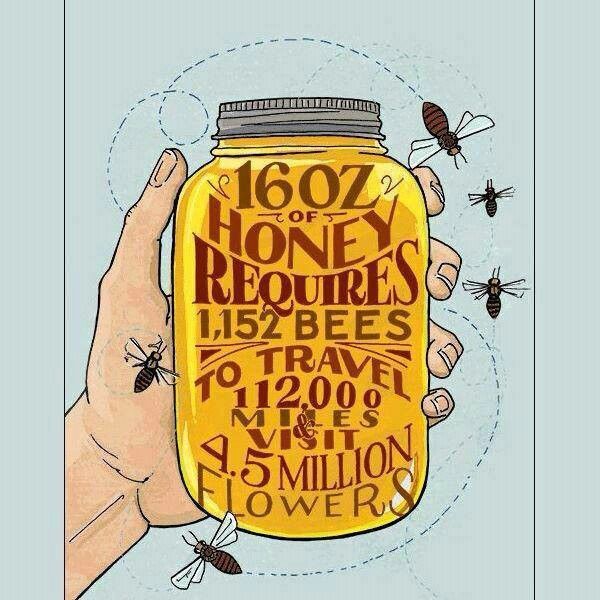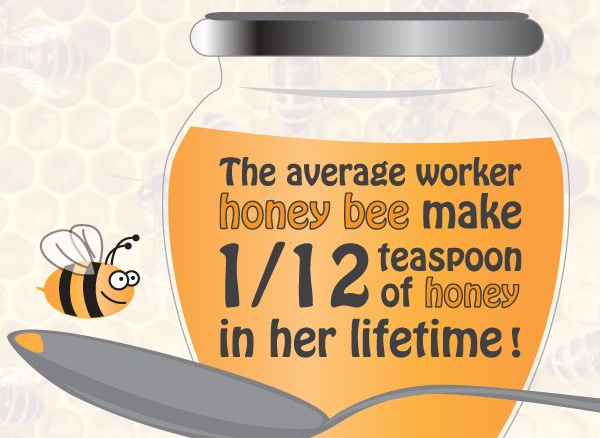How do bees make honey?
Bees make honey from nectar. During the spring and summer the colony sends out thousands of foraging bees who collect the vast amounts of sugary water produced by flowering plants as a bi-product of photosynthesis. A single cherry tree can produce 2kg of nectar per day and honeybees have evolved a long straw-like tongue for collecting it.
The amount of nectar that the bees can collect is influenced greatly by the weather. In very wet summers the nectar produced by plants and trees is much diluted and therefore of poor quality. In very hot weather the plants stop producing nectar entirely.
Nectar Quality
The amount of water in the nectar is a measure of its quality and your bees will actively source the flowers producing nectar with the lowest percentage of water and the highest percentage of sugar. In a good season the bees will actually become quite discerning about this and foraging bees who return with watery nectar will have their load rejected by the hive bees and sent out into the field to do better.
The foraging bees transfer the nectar at the entrance of the hive to other bees who have the job of packing it into the storage cells.

How many bees does it take to make a jar of honey?
Have you ever wondered how a tiny little insect like a bee could ever fill a jar of honey? If it were just down to one bee it would be a mighty task but the work is shared by many thousands of bees and is a great example of what can be achieved by a co-ordinated effort. Think of it in terms of humans creating something like a pyramid.
A jar of honey weighs 454 grams and a bee can carry about 0.04 grams of nectar. But nectar is only about 40% sugar and honey needs to be about 80% sugar so the bee actually only carries about 0.02 grams of honey on each trip.
Now how many bees would we need to fill a jar of honey? The answer is 454/0.02 grams which equals = 22,700 trips are required to fill a single jar of honey.
This sounds impressive enough but of course a colony of bees doesn’t just make one jar of honey. Over the year the queen will produce between 100,000 and 200,000 bees that will each spend between 10 and 20 days collecting nectar.
At its most productive a single colony of bees could theoretically produce around 800kg of honey.
The reason that beehives aren’t the size of warehouses to accommodate all this honey is that it is being continually used up by the bees as fuel, primarily to keep the brood warm. So at any given time there may only be between 10 and 20kg of honey in the hive.


Some for the bee and some for me
How much honey will you be able to collect from your hive? The first thing to point out is you can’t act like a big brown bear and take all the bees honey! You need to leave enough for the bees to last them through the winter when they need the honey as fuel to heat their home. In a good year you will be able to collect 30-50kg of honey without affecting the bees stores but in a bad year you may even have to feed the bees with sugar syrup without even taking any honey for yourself.
Bees actually stop moving below 8 degC so it’s vital that they keep their home above that temperature. In practice bees will keep themselves clustered together on the combs at about 20 degC. They don’t generate this warmth by lighting little stoves and fuelling them with honey. They have a much more ingenious solution. They generate this heat by vibrating their biggest muscles, which are their wing muscles, very fast. You may be thinking that thousands of bees flapping their wings would surely also create a chilly breeze cooling the hive rather than heating it. Well it would but the bees have a trick up their sleeve. They are actually able to dislocate their wings so that they can vibrate the muscle without flapping their wings. Amazing!
The more of the warmth that your bees can retain the more likely it is that they will come through even hard winters without running out of fuel and will be in good condition the following spring.
The bees will need 20kg of honey to see them comfortably through the winter. If the bees have stored 30kg you can remove 10kg without any consequence. However, if you need to take 15kg of honey because you’ve promised all your friends, neighbours and aunts and uncles a jar for Christmas you will need to make up the 5kg deficit.
You do this by feeding the bees the equivalent weight in sugar as a syrup. This is quite simple to do and the bees will store it in the cells exactly as they would if it were honey.

